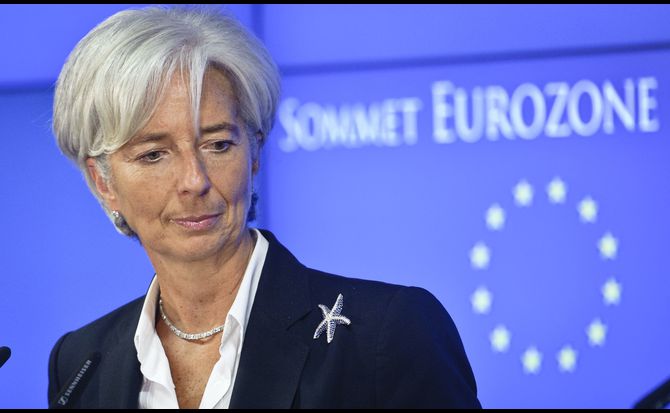Politics follow the money – the ECB’s fate
History contains many examples of what happens when politicians gain control over the currency. Few of them end well. The fact raises concerns about what Christine Lagarde might bring to the policy of the ECB.

In a not very convincing way, the European Union’s heads of state and governments have chosen a new leadership team at the Union level. The most powerful appointment was probably not the new president of the European Commission, but the nominee to lead the European Central Bank– the guardian of the single currency.
Ever since money was invented, governments have tried to control it. That means mankind has a long history of monetary devaluations, which happen whenever the ruling authorities see an easy opportunity to finance their political or bureaucratic objectives.
Stabilizing factor
The gold and silver content of specie was ordinarily a stabilizing factor, though we have seen its debasement even in Roman times, through the admixture of copper. This practice had an inflationary effect. The one big exception was during the 16th and 17th centuries, when the Spanish Empire discovered such abundant gold and silver in the Americas that its very oversupply inflated prices. Since then, however, gold production has remained quite stable.
In the case of fiat money, the stabilizing factor is the issuing central bank, which must strike a balance between preserving the value of the currency and supplying enough money to ensure economic liquidity. Fiat money is a currency that is not backed by underlying collateral, such as precious metals, but by the trust people have for the emitting institution. Today, for most of Europe, this institution is the ECB, whose primary duty is to preserve the value of the euro.
Fulfilling the ECB’s mandate requires careful management and complete independence.
Fulfilling the ECB’s mandate to keep the purchasing power of the euro stable requires careful management by seasoned bankers and complete independence from politics. A good historical benchmark is Germany’s Bundesbank, which for decades guaranteed the stability of what was then the continent’s most trusted currency: the Deutsche Mark. Today, these principles are still followed to a certain extent by the Swiss National Bank.
Need for discipline
Sound monetary policy, at its core, depends on restraining the constant and inherent desire of governments to overspend, using debt to finance expedient politics and oversized administration.
When the euro was first introduced and the ECB created in the late 1990s, there was a justified belief that the new institution would assure monetary stability, as Germany’s Bundesbank had done before. The so-called Maastricht criteria spelled out the rules for participating members of the currency zone, establishing strict deficit and debt limits. A wise non-bailout clause prohibited member countries from assuming the debt of other countries.
Quantitative easing became a purely fiscal policy to allow suicidal overspending.
These provisions of the Maastricht Treaty were established to enforce fiscal discipline, which is essential to achieve sustainable economic growth and long-term social cohesion in a multinational currency area. The treaty’s rules for the ECB ordered its management to take sole responsibility for the stability of the currency while forbidding the bank from engaging in fiscal policy. Since the ECB was an institution shared by 11 (now 19) separate countries, there was hope that it could steer clear of political entanglements.
The reality was different. The Maastricht criteria were often ignored. Once the financial crisis hit, followed by Europe’s sovereign debt crisis in 2009-2011, monetary policymakers’ resort to zero or negative interest rates severely damaged the value of savings and created bubbles and asset inflation. The never-ending Quantitative Easing, an ECB bond-purchasing program directed primarily at the government debt of member countries, was sometimes disguised as a program to stabilize the banking sector. In fact, it became a purely fiscal policy whose effect was to allow and even encourage EU member countries to continue suicidal overspending.
Goats and gardens
What the Eurozone member countries have done now marks a new step in this process, which will ultimately debauch the currency. Christine Lagarde, nominated to become the ECB’s next president, is managing director of the International Monetary Fund (IMF) and a former French finance minister. She is, in other words, a full-blooded politician.
With the ECB’s new management, it is likely that European governments have installed a willing enabler.
In her public roles, Ms. Lagarde has been extremely supportive of heavy deficit spending and cheap money, while expressing little concern for the value of savings. This puts her squarely in the camp of short-term politics. Perhaps as a hedge against this track record, it was decided to install Philip Lane, the governor of the Central Bank of Ireland, at her side as ECB chief economist. Yet Mr. Lane’s stint at the Irish central bank is not reassuring, since he also expressed the opinion that governments should be spending more, not less.
There is no reason to question Christine Lagarde’s general qualifications. She is an experienced and accomplished politician. A goat, too, is in many respects a useful animal. But you would never ask a goat to guard your vegetable garden. Putting a politician in charge of protecting the value of the currency will do about as much good as having your vegetables watched by a goat, rather than a dog. Judging by the past opinions of Philip Lane, there is little hope that he will ensure respect for the ECB’s basic rules, either.
With the ECB’s new management, it is likely that European governments have installed a willing enabler of excessive spending.
Even so, miracles can happen. That is the best hope for a stable euro.
